Sainte-Marie-du-Mont on the Cotentin Peninsula in Normandy is known among cycling enthusiasts as a stage location of the Tour de France. In 2016, the British cyclist Mark Cavendish crossed the finish line here first. However, on June 6, 1944, it was the Americans who were the first to metaphorically cross the finish line. Sainte-Marie-du-Mont and the neighboring hamlet La Madeleine were the first municipalities to be liberated in this part of Normandy. The blog details what led up to this and why this beach was so crucial for the Allies. It also guides readers through the key attractions of D-Day around Utah Beach, the code name for the landing beach of Sainte-Marie-du-Mont.
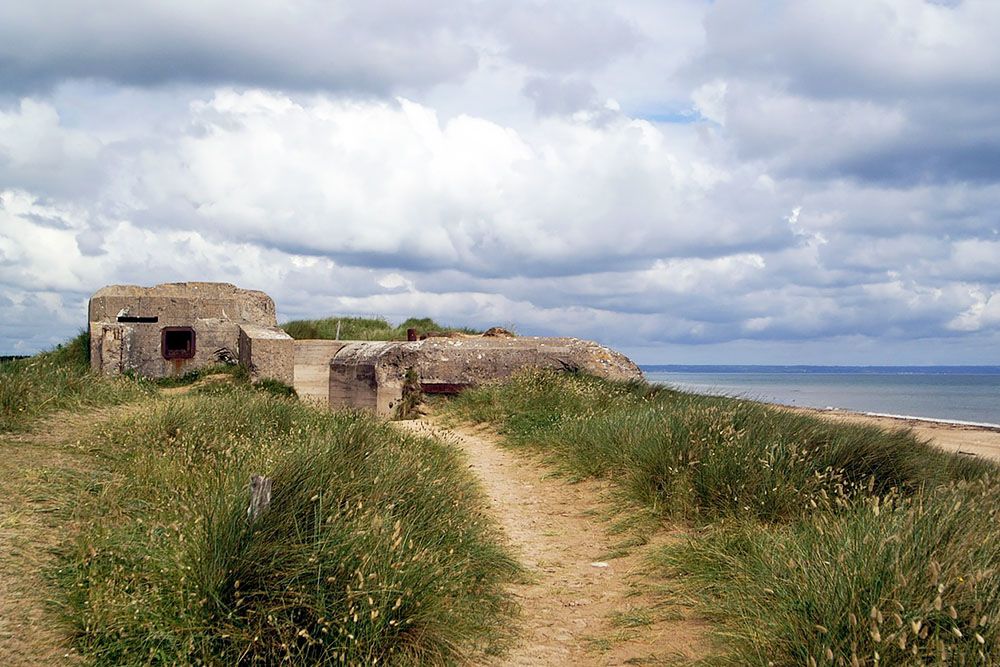
Utah Beach and D-Day
Four months before D-Day, Generals Eisenhower and Montgomery decided that the invasion would cover an 80-kilometer stretch instead of the original plan of “only” 40 kilometers. The expansion primarily concerned the Cotentin Peninsula. The main objective of the peninsula’s invasion was to swiftly capture the port of Cherbourg.
The strategic value of Cherbourg for the success of Operation Overlord was significant. The deep port needed to quickly receive ships from the United States to facilitate the logistical operation of supplying the advancing Allied forces with troops, ammunition, and goods.
The goal of landing on Utah Beach during D-Day was to establish a foothold on the western side of Normandy. This task was assigned to the American 4th Infantry Division.
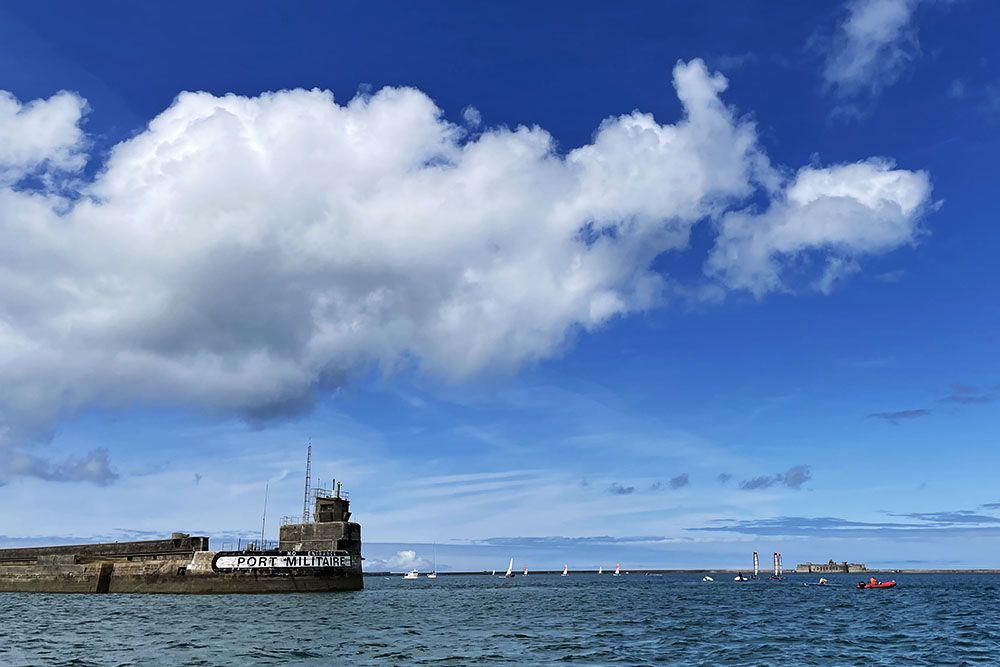
The surprisingly rapid conquest of Utah Beach
Five hours before the first landings from the sea, American airborne troops were dropped behind the coastal defense, including at Sainte-Mère-Église, a village from the 11th century famous for a scene in the 1962 film The Longest Day. Advancing towards the beach, the airborne brigade cleared the enemy positions threatening the Allied beach exits, preventing major counterattacks.
The German stronghold at Utah Beach comprised various shelters, bunkers, a grenade launcher, and four cannons covering an anti-tank zone. This modest defense proved no match for the devastating air and sea bombardments of D-Day. They offered little resistance to the American assault troops, despite many units landing nearly 2000 meters southeast of the original plan. The attack was a total success by the end of the day, with relatively few American casualties.
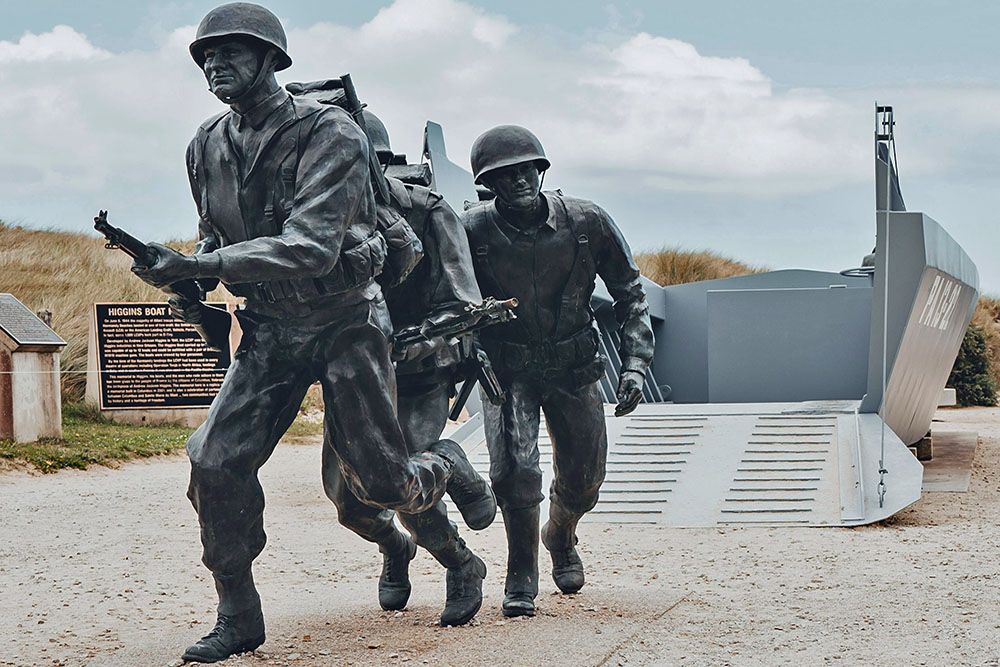
The follow-up: The Conquest of Cherbourg
The American 9th Infantry Division reached the west coast of the peninsula on the night of June 17-18, effectively dividing the Cotentin from Quinéville to Barneville, trapping approximately 30,000 German soldiers. After intense air bombardments and combat resulting in thousands of casualties on both American and German sides, Cherbourg was ultimately captured on June 26. Cherbourg was the first major French city to be liberated by the Americans. However, just before its capture, the Germans destroyed a large part of the port and turned the city into a vast ruin. It was only on July 16 that the first large ships could dock there to supply the Allied forces.
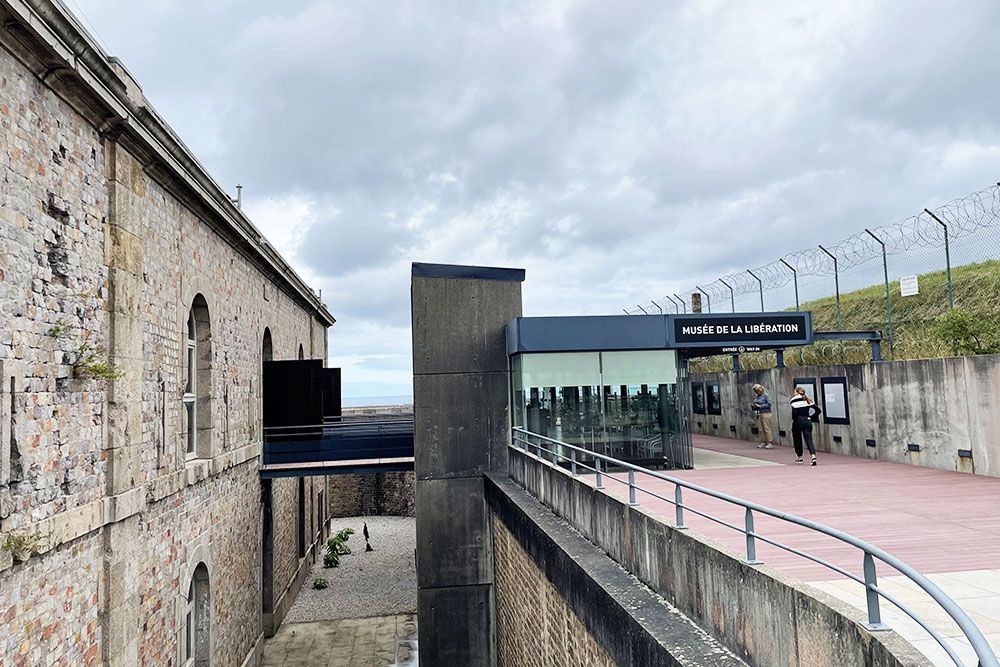
D-Day memorial sites at Utah Beach
When visiting the beautiful Cotentin Peninsula, these D-Day sites at Utah Beach should not be missed:
Utah Beach Landing Museum and the beach itself
The Utah Beach Landing Museum is located at the site of a former German stronghold right on the beach where the Americans landed. The museum offers an immersive experience in the history of the D-Day landings. Its collection is rich in objects, vehicles, equipment, and testimonies, providing a profound understanding of the historical events surrounding the invasion of Utah Beach and the reasons for its successful outcome.
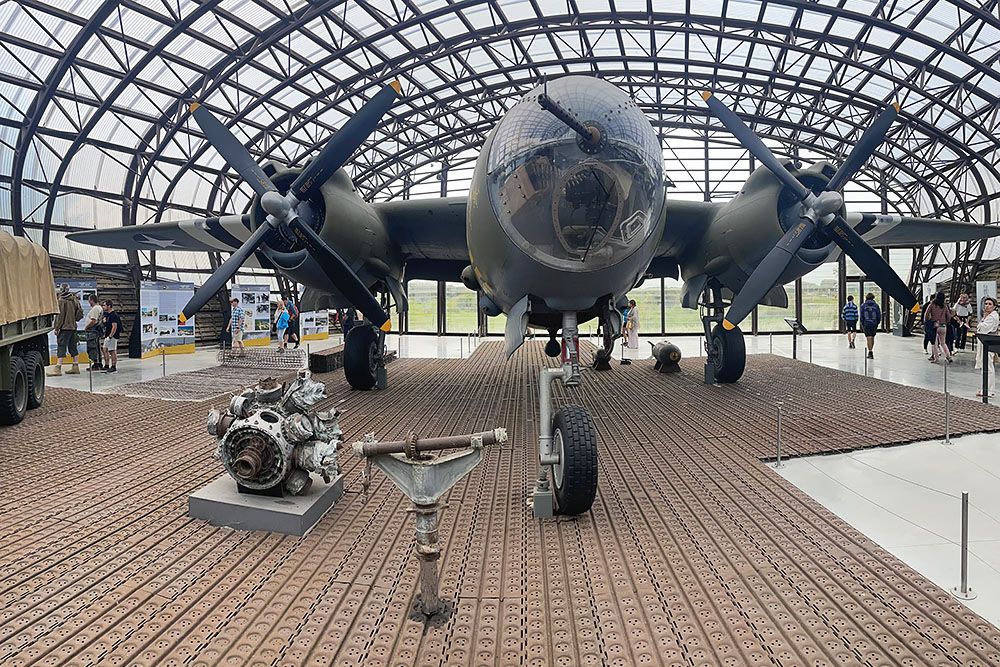
We spent several hours in this particularly interesting museum. Some exhibitions that will particularly stick with us are:
- An authentic B26 bomber: an exceptional aircraft and one of the few remaining examples in the world.
- The documentary “Victory Beach”: the epic story of the American soldiers who fought for our freedom. The documentary has won prestigious awards.
- A reconstruction of the historical events around an American landing craft, highlighting the efforts of the U.S. Corps of Engineers in clearing the beaches.
Near the museum, you will find several monuments in memory of the men who participated in the D-Day landings. These monuments pay tribute to the sacrifices and historical significance of these events. One of them is located on a dune top. As we gaze out to sea from here, we imagine what it must have been like for the Americans and Germans at that time. Approximately 200 people died on Utah Beach that day. Now, we only see young families with laughing, playing children on the same beach. We can hardly imagine a greater contrast.
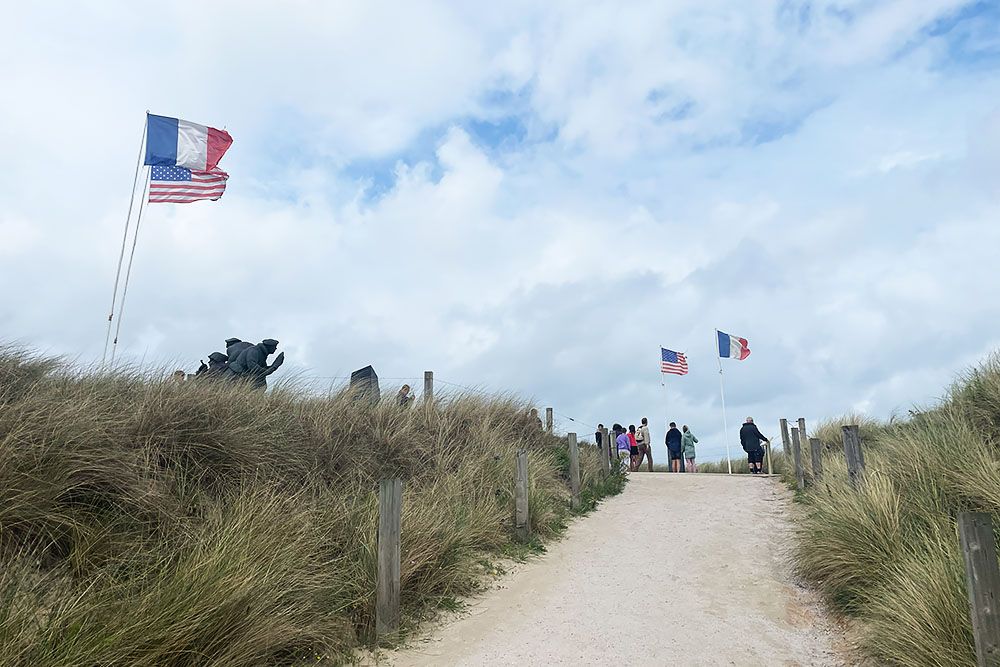
Airborne Museum in Sainte-Mère-Église
The Airborne Museum, located in the historic Sainte-Mère-Église, is an impressive tribute to the courage and determination of the paratroopers who participated in the Battle of Normandy. This museum provides an excellent insight into the airborne operations preceding the D-Day invasion.
The Airborne Museum is near the famous church of Sainte-Mère-Église. American paratrooper John Steele became stuck on the church spire during the nighttime airborne operations. This event gained worldwide fame thanks to the film “The Longest Day.” It symbolizes the heroism and sacrifice of the paratroopers who participated in the invasion. The museum tells the story of the airborne operations in an engaging and memorable way, providing a better understanding of the impact of the battles during D-Day.
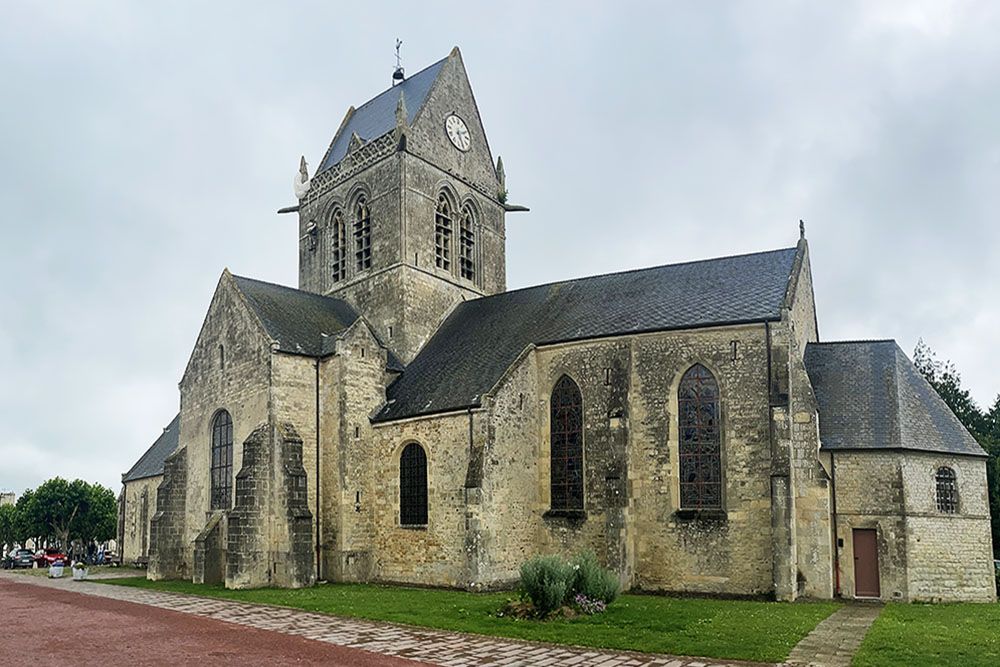
In the museum, you will find an extensive collection of memorabilia, uniforms, equipment, and vehicles used by the Allied airborne troops. In addition to static exhibitions, the Airborne Museum also offers interactive presentations, allowing visitors to experience the airborne operations and combat situations up close. One such experience that made a significant impression on us is a reconstructed aircraft fuselage. In the dark room, you can hear the deafening sound of the engines while it’s clearly thundering outside. It must have been a terrifying experience for the paratroopers: not only the flight itself but also the uncertainty of what the mission would bring.
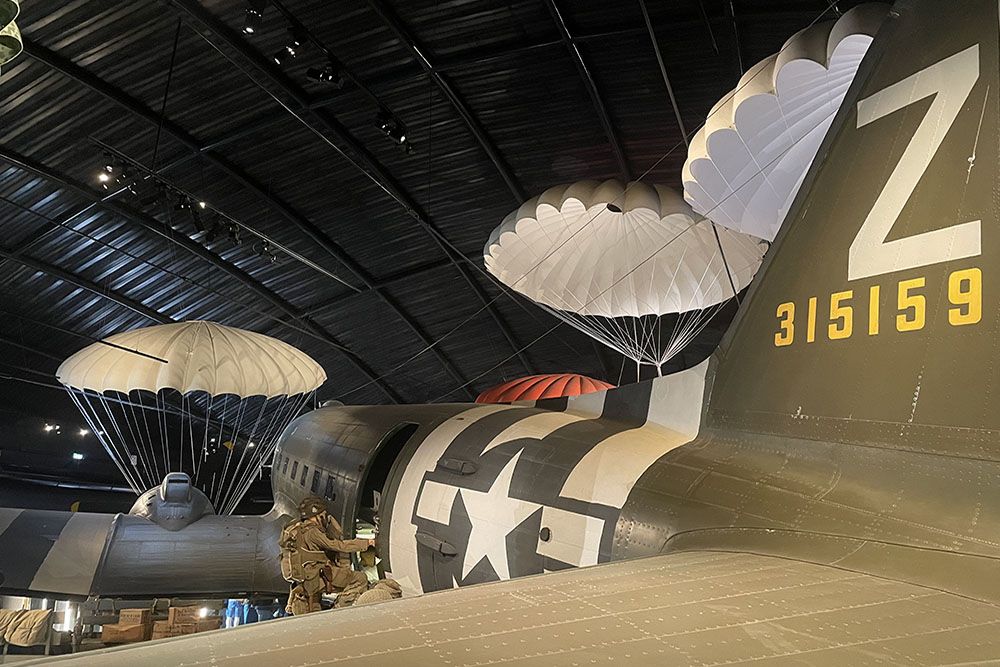
The Crisbecq Battery Museum
The Crisbecq Battery was part of the Atlantic Wall, an extensive defensive line of Nazi Germany along the coasts of Western Europe. The battery was one of the larger coastal batteries in Normandy to resist a possible invasion by Allied troops. The battery consisted of heavy bunkers, artillery, and underground tunnel systems.
During the historic invasion of Normandy on June 6, 1944, the Crisbecq Battery became a significant target for Allied bombings and ground offensives. The intense fighting around this location reflects the determination and sacrifices of both the Allied troops and the German defenders.
Today, as a visitor, you can explore the Crisbecq Battery and gain a deeper understanding of the events that took place there. Guided tours and exhibitions offer an educational experience, providing a better understanding of the impact of the fighting during D-Day. You will learn about military strategies and especially the technological developments of that period. The battery looks quite extensive and is therefore particularly impressive. As we stood there, we could hardly imagine how the Allies managed to overcome the battery.
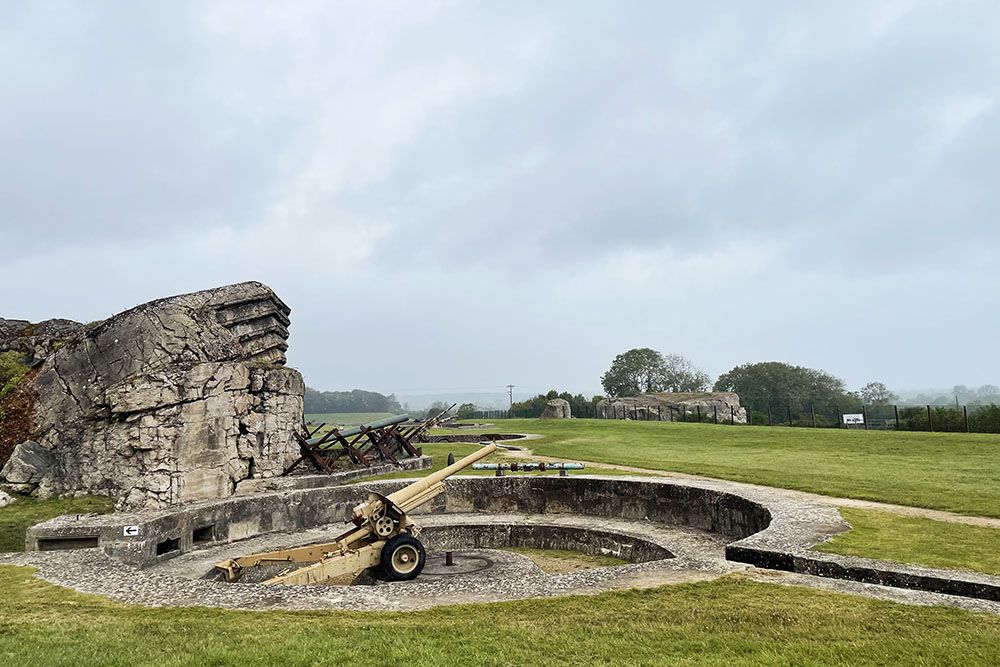
World War II Museum in Quinéville
During our bike ride past various D-Day commemorative sites on the Cotentin Peninsula, we happened upon the World War II Museum in the small coastal town of Quinéville. The museum tells the story of the events of World War II from a Norman perspective. With vivid scenes and life-size reconstructions, you are completely transported back in time. For example, there is a completely reconstructed street from the 1940s, with shops and houses. Various vehicles and equipment are on display. Additionally, you can even enter an authentic bunker with a view of the still-existing anti-tank wall on Quinéville beach.
Our visit to this museum was surprisingly and particularly worthwhile. We gained a good understanding of what the years of occupation must have been like for the local population. The museum not only pays attention to daily life. Like the Falaise Museum near Juno Beach, the museum also addresses topics such as food shortages, resistance, and collaboration.
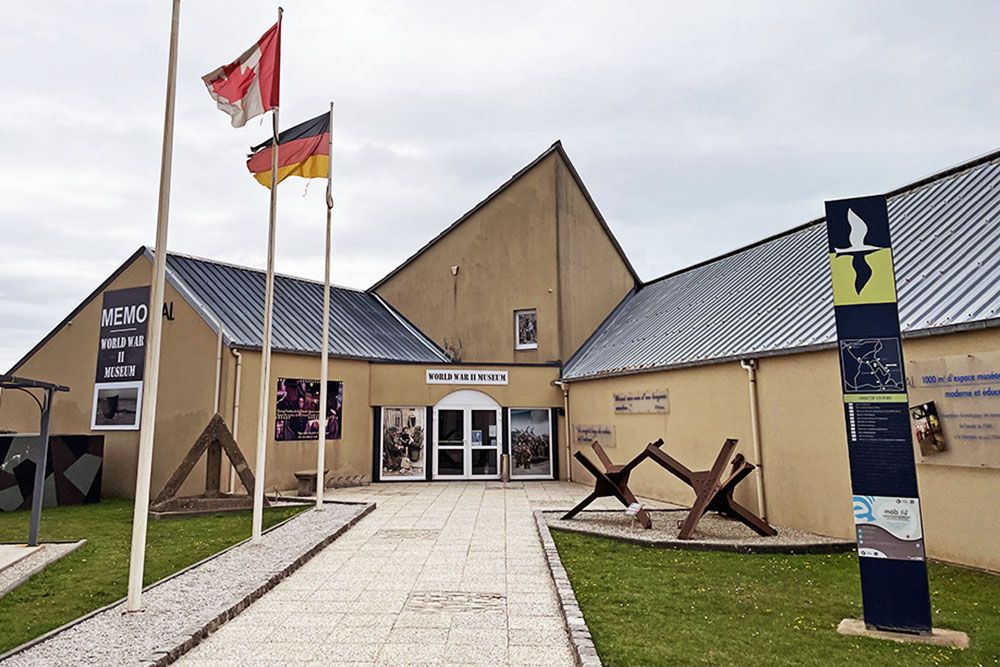
Normandy Victory Museum in Carentan-les-Marais
The Normandy Victory Museum in Carentan-les-Marais is a very interesting museum for history enthusiasts. It pays tribute to the events after the D-Day landings, taking you back to the turbulent period following the invasion of Normandy.
The museum focuses on a less well-known but crucial period after the D-Day landings: the Battle of the Hedges. This event is less well-known than the invasion itself, but it was invaluable for the eventual victory in Normandy. The museum highlights the difficult fights for the soldiers and the hardships of the Norman civilians, who would only experience the joy of liberation weeks later.
With over thirty ultra-realistic scenes, complete with sound effects and more than 15,000 authentic objects, the museum provides a profound educational experience. Additionally, the museum highlights the importance of the Battle of the Hedges and pays tribute to both civilian and military victims.
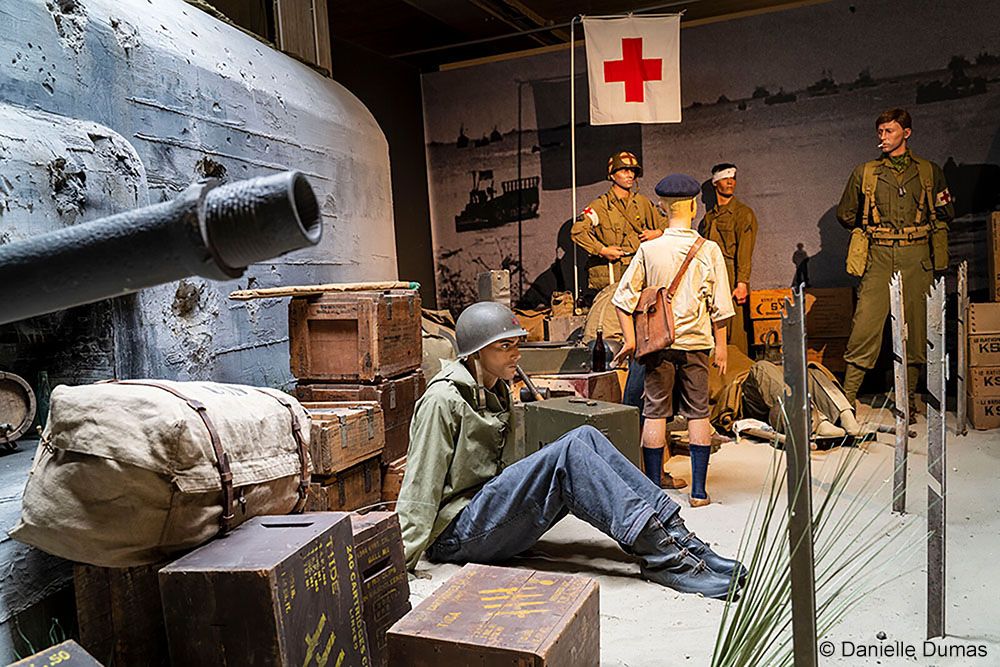
Other interesting sites at Utah Beach
In the vicinity of Utah Beach, there are other noteworthy attractions:
D-Day Experience in Carentan-les-Marais
The D-Day Experience highlights the events of D-Day and its aftermath in a unique and impressive way. It features various attractions that immerse visitors in history, including the 3D Movie Theater, the D-Day Experience, the Dead Man’s Corner Museum, and the 4D Dynamic Flight Simulator. These attractions provide insight into the role of airborne troops and the impact of the battle on the region.
Batterie d’Azeville
The Azeville Battery, a German artillery battery near the village of Azeville in Normandy, played a significant role in the events around the Utah Beach landing. The battery remained operational on D-Day despite heavy aerial bombardment and only fell into American hands nine days later. The site now belongs to the local municipality and houses a museum in one of the gun casemates.
Fort Vauban on Tatihou Island (Saint-Vaast-la-Hougue)
Located just off the coast of the historic town of Saint-Vaast-la-Hougue, Tatihou Island is home to Fort Vauban. This fort, with its tower on the UNESCO World Heritage List, played a role in numerous historical events over the centuries. Notably, the fort has military fortifications from four centuries standing alongside each other.
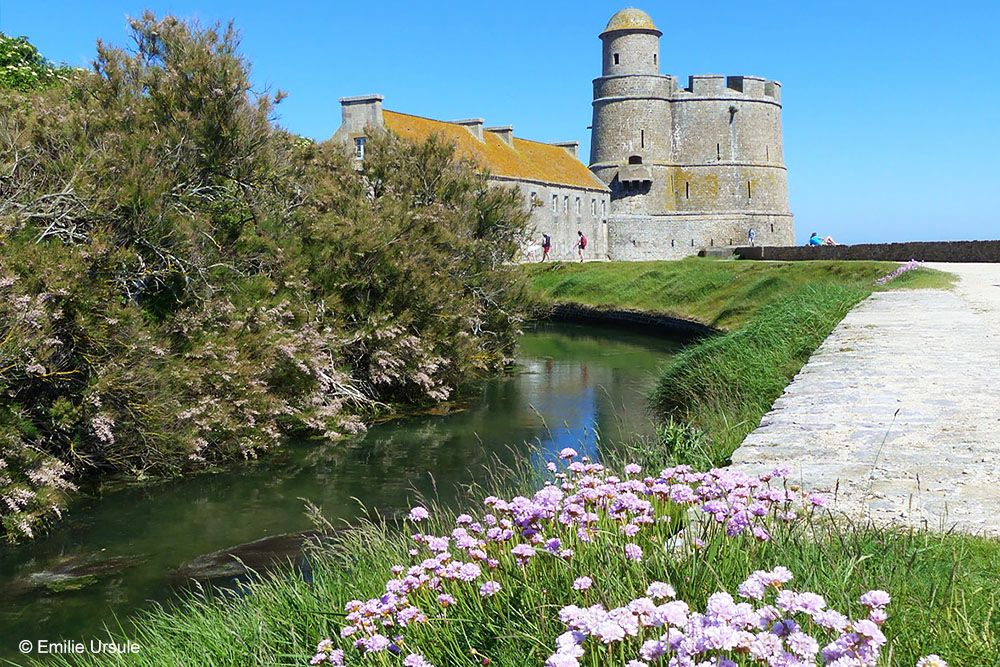
Practical information for visiting D-Day sites at Utah Beach
Utah Beach is situated on the west coast of the Cotentin Peninsula in Normandy, near the mouths of the Douve and Vire rivers. It is the westernmost of the five Allied D-Day invasion beaches.
Utah Beach played a crucial role during D-Day. American troops were tasked with establishing a beachhead on the western side of Normandy. The swift capture of Utah Beach by the Allies laid the foundation for the subsequent capture of Cherbourg, which was strategically important for the success of Operation Overlord due to its deep harbor's logistical significance.
The main D-Day commemorative sites at Utah Beach include:
- Utah Beach Landing Museum and the Beach: The museum is located on the site of a former German stronghold at the beach where American troops landed during D-Day. It provides an immersive experience in the history of the D-Day landings and highlights strategic choices and the reasons behind the invasion's success. Nearby, there are monuments commemorating the participants of the landing.
- Airborne Museum in Sainte-Mère-Église: Situated in the historic Sainte-Mère-Église, this museum pays tribute to the bravery of the paratroopers who participated in the Battle of Normandy. It provides a memorable account of the airborne operations and their aftermath.
- Crisbecq Battery Museum: This museum showcases the Crisbecq Battery, a significant German defensive point in the Atlantic Wall that was targeted by Allied bombings and ground offensives during the Normandy invasion.
- World War II Museum in Quinéville: The museum narrates the events of World War II from a Norman perspective, offering an in-depth educational experience, including vivid scenes and reconstructions.
- Normandy Victory Museum in Carentan-les-Marais: This museum pays tribute to the events following the D-Day landings and sheds light on the Battle of the Hedges, honoring both civilian and military victims.
Other interesting locations near Utah Beach include:
- D-Day Experience in Carentan-les-Marais: This museum highlights the events of D-Day and its aftermath in a unique and impressive manner, with various attractions immersing visitors in history.
- Batterie d’Azeville: A former German artillery battery that played a crucial role around the Utah Beach landing, with a museum housed in one of the battery's gun casemates.
- Fort Vauban on Tatihou Island: A historic fort on Tatihou Island that played a role in numerous historical events over the centuries, including military fortifications from four centuries.
The D-Day memorials and other interesting locations around Utah Beach are fairly spread out. Therefore, a (rental) car is the most obvious transportation option. Alternatively, the famous Vélomaritime cycling route passes several D-Day memorial sites around Utah Beach, and there are bike rental companies in the area. Like Véloc'Ouest and Loc Vélo.
Additionally, various (guided) tours can be booked through our partner GetYourGuide. However, when considering such tours, bear in mind that you will only have relatively short visits to the various memorial sites. For this reason, we consider the tours less suitable for those with a keen interest in history, like ourselves.
One of the memorial sites is the island of Tatihou. This island can be reached by amphibious vehicle or on foot across the local oyster beds at low tide.
There are numerous accommodations in the vicinity of Utah Beach, with most located in the towns of Sainte-Mère-Église, Sainte-Marie-du-Mont, and Carentan. Additionally, there are some accommodations closer to Utah Beach. One of the gems is the more than fantastic Domaine Utah Beach, where we ourselves stayed.
Other topics you may be interested in
- D-Day memorial sites: Journey to the birthplace of peace
- On a cycling holiday along the Vélomaritime in Normandy
- Normandy: historical sights and beautiful nature
- Mont-Saint-Michel, iconic island near Normandy
- Côte d’Albâtre in Normandy | the nicest villages



